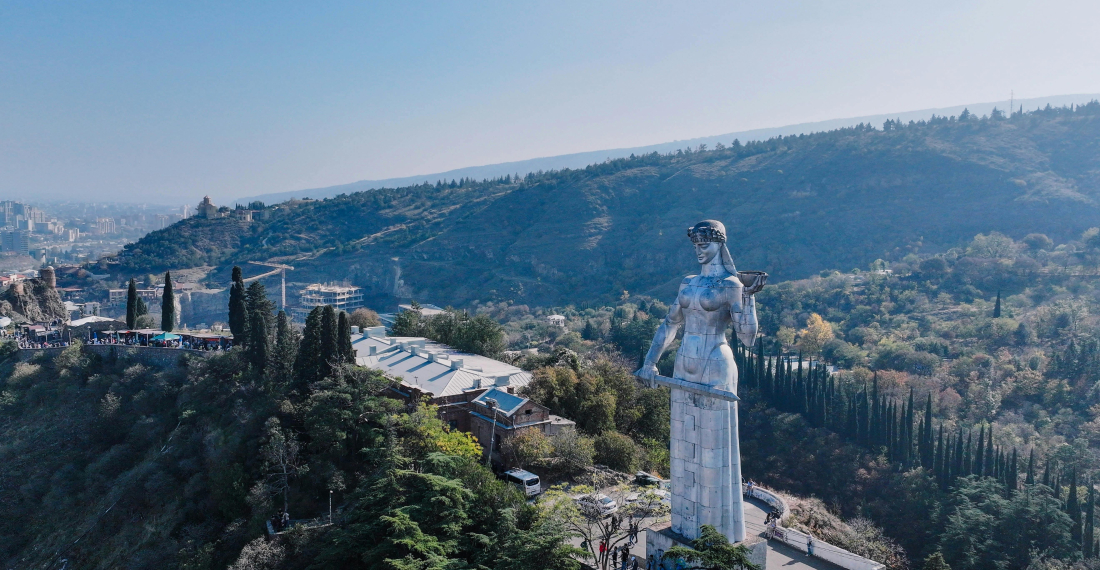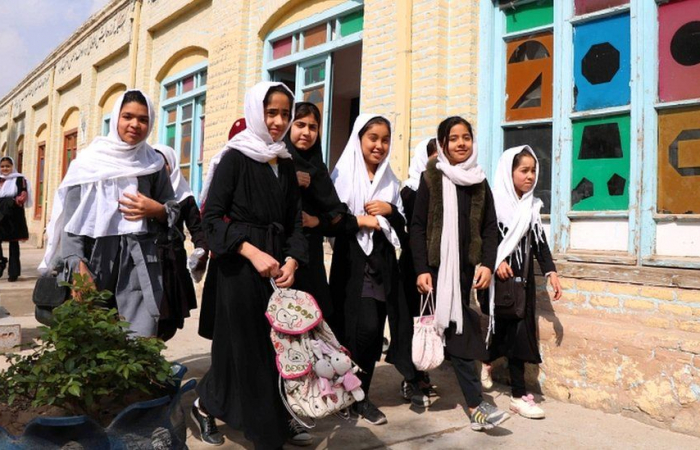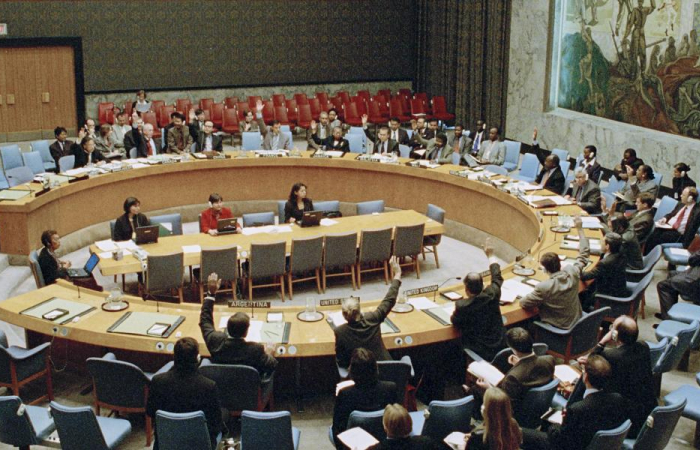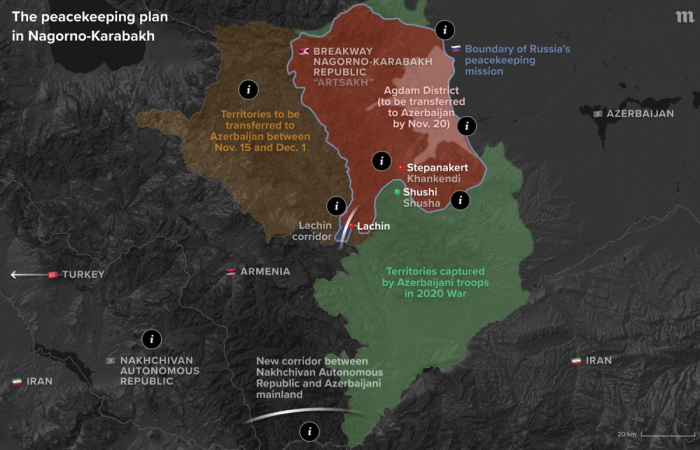The political crises in Georgia that started after disputed parliamentary elections at the end of last year, shows no sign of easing. The government, formed by the ruling Georgian Dream party, appears exhausted. Its strategy of wearing out the opposition failed. It is now increasingly resorting to repression. Many opposition activists have been arrested, and the Government keeps introducing laws and administrative measures that are meant to tighten its control of the country, but in practice increase the resolve of its opponents. The Georgian Dream government is at a dead end.
On its part, the opposition has failed to tip the balance against the government. It is made up of two elements: the first element is made up of the four political parties that passed the threshold in the contested elections. They are divided in their thinking on how to go forward, for example, whether or not to contest the local elections, scheduled for the autumn. But their divisions run deeper, and are evident for all to see. The second part of the opposition is made up of youth, students and civil society activists. They keep the opposition political parties in check. They also have more credibility with the general public, and for this reason, if nothing else, they are a bigger threat to the government. But they are inexperienced, and their influence is mainly concentrated in Tbilisi, and to some extent, Batumi, so they have their limits.
The Georgian people on the whole have given up on the Georgian Dream government, but not enough to drive it out, yet. They do not at the moment see a credible alternative. The Georgians are waiting for the proverbial “man on the white horse” to come and save their country from the impasse it finds itself in, but this is dangerous. The “man” may never arrive, and if he does he may prove to be dangerous.
The issues
The Georgian Dream (GD) government for a long time tried not to make enemies. They supported a business-friendly policy, close relations with NATO, the EU and the West in general and a benign laissez-faire policy. In the last year, GD convinced itself of the existence of a big conspiracy against it. The report of the Chairman of Parliament, and GD ideologue, Shalva Papuashvili, made to parliament on 15 May, speaks about five revolutionary forces that tried to overthrow the GD government.
Now GD has abandoned Georgia’s EU ambitions and has built a strong relationship with China.
Crucial is the issue of relations with Russia. GD will wait for the right moment to declare normalisation of relations with Russia, but the process of clearing the decks so this can happen has definitely started.
The country’s geo-political orientation is now the big issue dividing government and opposition.
Four leaders, one problem
The Georgians have had four leaders in the post-Soviet existence of their country: Zviad Gamsakhurdia, Eduard Shevardnadze, Mikhel Saakashvili and Bidzina Ivanishvili. You cannot imagine four people so different from each other. All four were passionately convinced they were right, and all four were initially perceived as the “man on the white horse” that was going to be the salvation of Georgia.
I have been visiting Georgia regularly every year since 1992. I never met Gamsakhurdia, he had already left by the time I first arrived in Georgia in March 1992. I did meet his wife Manana, and she was quite eccentric. I met Shevardnadze, Saakashvili and Ivanishvili.
Zviad Gamsakhurdia
Zviad Gamsakhurdia was a romantic historian with no experience of government or politics but swept to power in a wave of anti-Russian feelings as the USSR was disintegrating. He left the country divided and in a mess, and in a civil war.
Eduard Shevardnadze
A Communist apparatchik from Guria, Eduard Shevardnadze rose through the communist ranks to become First Secretary (de facto head) of the Georgian SSR. He never took communism seriously but was always careful to keep good relations with Moscow – famously saying that for Georgia the sun rose in the North. He was brought by Gorbachov to Moscow, and the CPSU Politburo, and to be Soviet Foreign Minister. In this capacity, he became a world statesman, and is credited with having been a main architect in ending the cold war.
Shevardnadze was invited back to lead Georgia in 1992, by the then state council and popular acclaim. This was a time when the country was at its worst, and falling apart. South Ossetia had already seceded, and Abkhazia was in the process of doing so. There were fears that Ajara and the Armenian-populated areas in the South would follow. Shevardnadze saved Georgia from complete collapse by the sheer force of his personality. There was no army or state institutions to speak of, just warlords with their militias. The international community was largely absent for most of the 1990s: a few embassies, an OSCE mission, and 2 or 3 international NGOs.
Shevardnaze saved Georgia, but then had no clue how to build a small successful state. He remained in his state of mind as the Soviet Foreign Minister. Corruption, incompetence, mediocrity and cronyism became the hallmarks of the last two years of Shevardnadze’s rule 2001/2003.
Mikheil Saakashvili
Then came the next “man on the white horse”, Mikheil Saakashvili. Saakashvili was a man in a hurry. He came back to Georgia from his studies overseas in 1995, was handpicked by Zurab Zhvania and catapulted into Parliament, and later served as Shevardnaze’s Minister of Justice. In Autumn 2003 he led the protests that brought down the Shevardnaze government. I was in the Georgian parliament on that historic day when Saakashvili literally pushed the door open, cleared the parliament of Shevardnadze and the MPs who supported him, and declared himself the new leader of Georgia.
In January 2004 Saakashvili was elected president of Georgia by a landslide. He started an ambitious programme of reforms and was for a decade the darling of the Americans and the Europeans. He was however prone to cutting corners and used heavy-handed tactics to secure and consolidate power, often riding roughshod over citizens. The Georgians became wary of him, particularly after the disastrous war with Russia in 2008. Anti-Saakashvili's feelings were high, but how to get rid of him?
Bidzina Ivanishvili
Then came another “man on a white horse”, Bidzina Ivanishvili a recluse billionaire, who made his money in Russia and who most Georgians had heard of only vaguely. In 2012 Ivanishvili decided to challenge the Saakashvili order. This was no mean feat and could easily have failed. He built a coalition around him, including a lot of people who hated each other but were willing to work together to bring down Saakashvili. The Coalition won the 2012 election, and Saakashvili’s United National Movement moved to opposition. Ivanishvili stayed as prime minister for only one year. When he resigned some people thought he was leaving politics. In fact, he became a shadow leader, appearing and disappearing in the public domain as it suited him. I never met anyone in Georgia who believed Ivanishvili ever left politics completely.
The problem is Ivanishvili does not understand politics. He treats politics like a business. He hires and fires without due regard to the consequences. In 2016, the other members of the coalition left. Georgian Dream was on its own. The result has not been good.
Another “man on the white horse”?
All four men who led Georgia since 1990 had their good points. Initially, they all were welcomed as saviours. In a country where there is a proper system of checks and balances, and where institutions work they could have succeeded.
But Georgians continue to hanker for “a man on the white horse”, despite the clear risks. It is time they look for other solutions.






